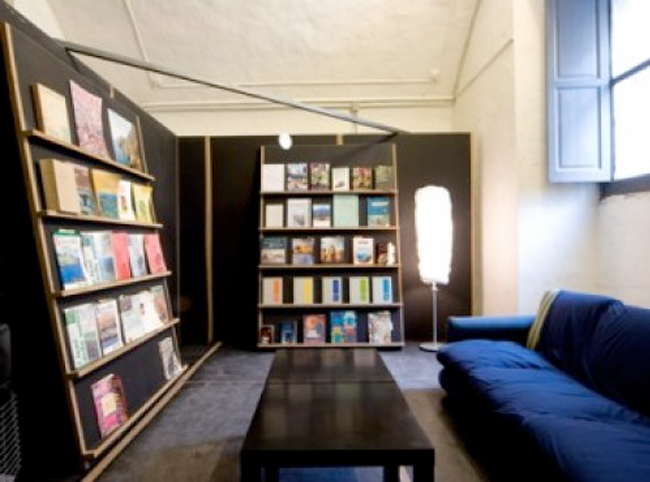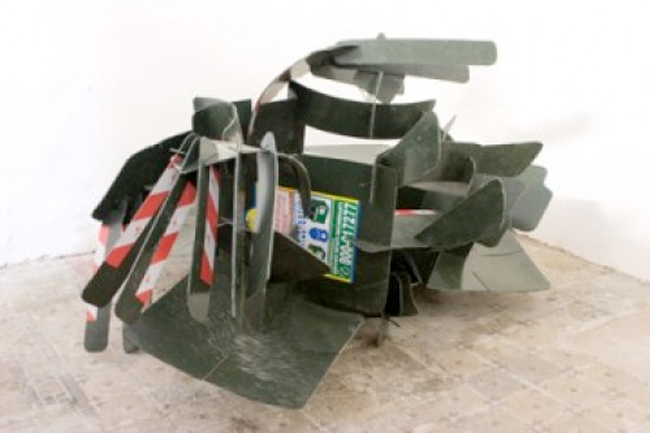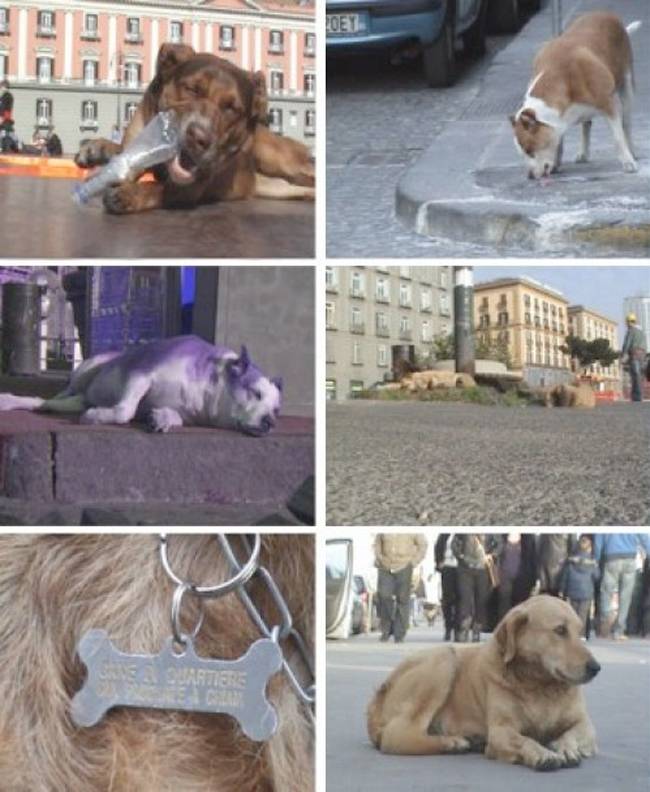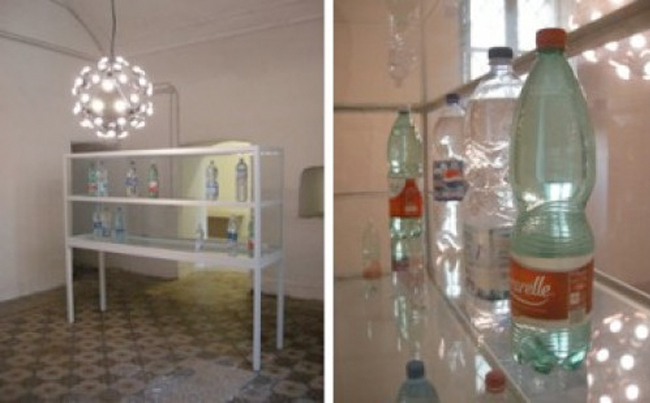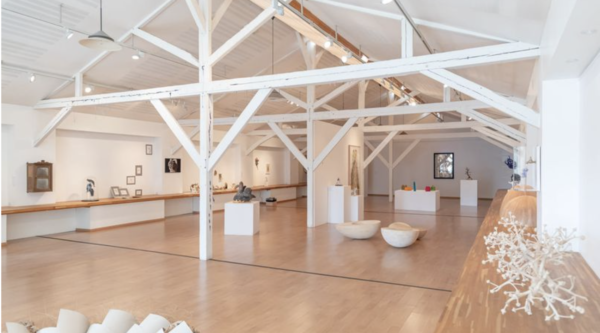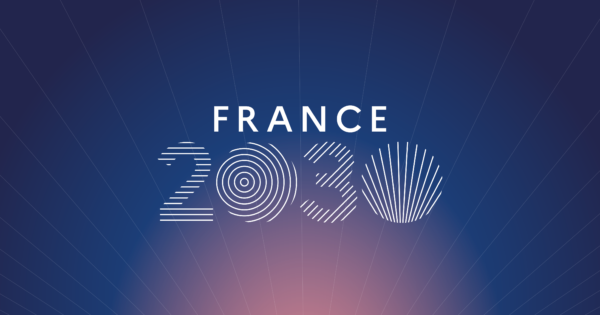
Appel à projets France 2030 « Alternatives vertes 2 »
Doté de 25 millions d’euros, ce dispositif vise à accélérer la transition écologique des entreprises culturelles, afin d’en faire un…
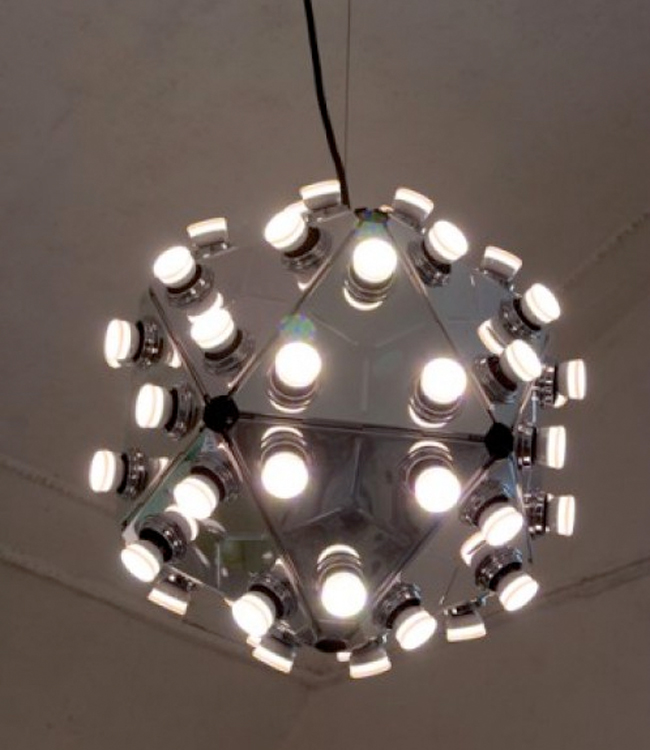
A series of interconnected environments, sculptures, sound installation, and film, The Foundation strips the process of art production bare, exploring the social role of the artist as a central though ambiguous figure in the ideological manufacturing of cultural values.
SWIFT AND STILL:
Text / Emily Verla Bovino from Art Paper
Aged wooden beams crisscross in an imposing scaffold that supports the crumbling stairwell of a seventeenth-century palazzo. Once home to the picture gallery of Naples’ Caracciolo princes, the building is now part of the Fondazione Morra Greco, a project space founded by the enterprising Italian collector Maurizio Morra Greco. Artist Tue Greenfort eases his way in and out of the maze of beams carrying one of six segments from a dismountable couch. Discovered by Greenfort in one of the Fondazione’s vacant apartments, the couch was used to furnish the resident artist’s room and now, in its third reincarnation, is about to become part of his most recent project The Foundation [March 8—May 9, 2008].
Tue Greenfort, details of Lampada Taraxacum Modificata, 2008, Taraxacum lamp (Achille Castiglioni), LED light bulbs, solar panels (courtesy of the artist, Fondazione Morra Greco, Napoli, and Johann König, Berlin; photo: Danilo Donzelli)
A series of interconnected environments, sculptures, sound installation, and film, The Foundation strips the process of art production bare, exploring the social role of the artist as a central though ambiguous figure in the ideological manufacturing of cultural values. « As an artist, you can’t deny you are taking part in this construction of cultural values, » insists Greenfort.1 « All work is political even if not overtly so. » While critics and curators often define Greenfort as an artist who deals with art and ecology, his preoccupation with biology and the natural sciences stems less from environmental activism than from his interest in creating critical reconstructions of contemporary human habitats.
An homage to the typically Italian arte dell’arrangiarsi, the art of getting by or making something out of nothing, the installation Microenvironment, 2008, features Greenfort’s couch, a half-broken lamp the artist redressed in wax paper, and the portable gas heater that warmed his lodging. Even the basic structure of the temporary room is built from salvaged material: the panels of a labyrinth designed by artist Gregor Schneider for the Fondazione’s first exhibition 26.11.2006, 2006. In fact, in The Foundation, Greenfort persists in his explicit mapping of the continuity between his work and the works of others. Inspired to create the living space of Microenvironment by the Fondazione’s second project, Eric Wesley’s Spafice, 2007, Greenfort reworks the futuristic minimalism of Wesley’s abstruse utopian vision into a familiar, less formal design, more likely to encourage the viewer’s active participation. « I often work by recycling the ideas of others, » Greenfort explains. « Originality is not a problem for me because all works make subtle references to others. » An exiguous space free from superfluous objects, Microenvironment is reminiscent of the « Anti-Design » culture advocated by radicals like the Florentine collective Superstudio, but without their slick suavity. A series of books, purchased from local sellers or donated by people Greenfort collaborated with during his residency, invite visitors to do their own research towards a more profound understanding of the exhibition. Outside Microenvironment sprawls Untitled (Botanical Structure), 2008: a large sculpture of interlocking shapes built from the green plastic cutouts that Greenfort conserved after installing Plexiglas windows into three public trash containers for Greenwashing, a group show held in Turin. Greenfort’s works are living, breathing organisms in constant symbiosis.
Naples: bags of garbage piled in mountainous heaps over stuffed trash containers. Apart from the more picturesque Vesuvius, « the city of garbage » has quickly become the most stereotypical representation of Naples. Overflowing dumps and inadequate local incinerators have led to bureaucratic paralysis. Garbage is also the new terrain of the Camorra, the Neapolitan mafia, whose focus has shifted from the heroin pushing of the 1980s to the new millennium’s more lucrative « trash emergencies. » But, after several conversations with curator Luigi Fassi, Greenfort’s initial fascination with the Neapolitan trash economy gave way to his realization that « the garbage problem would have been too obvious and would have simplified the complexity of Naples. » Though eventually abandoned, these first project ideas played a vital role in shaping the poetic of The Foundation.
The garbage question, for example, is addressed subtly in Microenvironment and in two other works: I Cani del Sindaco [The Mayor’s Dogs], 2008, and Condensazione [Condensation], 2008. In the analog film projection I Cani del Sindaco, Greenfort tracks Naples’ stray dogs, all registered and tattooed by the municipal government: the dogs are often shown feeding from garbage piles and using discarded plastic bottles as chew toys. In Condensazione, Greenfort recycles plastic bottles from restaurants and bars in an ironic reference to the market for artist editions. A work-in-progress that will only end upon the exhibition’s closing, Condensazione consists of a dehumidifier that transforms the high humidity of the Fondazione’s cellar into a seemingly inconsequential distillate. This water, potentially noxious if drunk, is then bottled in the fifty-ounce receptacles of trusted water companies and displayed in a sleek showcase at the Fondazione’s entrance. Aside from its obvious critique of water privatization, the work also highlights the inescapable fact that art is conditioned by its context, just as the artist is undeniably conditioned by the market and the institutions that commission and exhibit his work.
Condensazione’s dehumidifier passes almost unnoticed in the cellar, a vast underground cavern, where Greenfort’s sound installation Il Canto delle Sirene [The Song of the Sirens], 2008, plays on staggered speakers. The installation features recordings of crashing and lapping waves from outside and inside a grotto in Jeranto, the only bay still intact on the Sorrentine peninsula. A walk down the length of the dark cavern leads to a far wall that is in fact an archeological ruin, a segment of a Greek theater which was used as the groundwork for successive urban developments. Greenfort’s The Foundation mirrors the Fondazione itself: layer upon layer of hidden histories awaiting to be reanimated by the visitor’s gaze.
Another of the artist’s numerous ideas was to transform the Fondazione’s entrance into a basso, a groundfloor residence in the Neapolitan slums where private life becomes public theater. In Greenfort’s project, the basso would have been traversed by scooters serving as power generators for a video projection of Vesuvius’ crater in the cavern below. But instead of using Naples’ notorious scooters as energy source, Greenfort’s final project uses its celebrated sun, rendered famous by ‘O Sole Mio, the most popular song of the Canzone Napolitana, the Neapolitan Songbook. Installed above Greenfort’s showcase of artist editions, Lampada Taraxacum Modificata, 2008, an Achille Castiglioni Taraxacum lamp, is powered by solar panels installed on the Fondazione’s roof. Greenfort has replaced its sixty ordinary bulbs with Danish RGB LED lights, an energy-saving technology created by mixing red, green, and blue diodes to make white light.
In the end, Greenfort abandoned all project ideas that risked the gimmick. He returned to basic questions, probing his « own role and responsibility towards the institution and exhibition situation »: what is a Foundation and what is its role in cultural production? What are its advantages and pitfalls? More specifically, what is the mission of the Fondazione Morra Greco? Does it envision itself as a pioneer or will it ride the coattails of already established institutions? What is the future of Naples as an aspiring center for contemporary art?
Tue Greenfort, Microenvironment, 2008, library, couch, lamp, heater and various books, dimensions variable (courtesy of the artist, Fondazione Morra Greco, Napoli, and Johann König, Berlin)
Microenvironment’s dimensions—3.6 m x 4.8 m x 4.8 m—reference the Museum of Modern Art’s 1972 design exhibition Italy: The New Domestic Landscape. In the catalogue, found in the Microenvironment library, Emilio Ambasz quotes William Empson’s Seven Types of Ambiguity to explain the poetic duality « swift and still »: « the human mind has two scales on which to measure time (…): the years of a man’s life seem swift (…) like the mist from the mountains which gathers a moment then scatters, the morning seems still (…) so that this moment is apocalyptic and a type of heaven. »2 Likewise, Greenfort’s The Foundation is swift and still: « swift » in its eagerness to capture a specific historical moment in a subjective local reality and « still » in its ability to restore such moments to an objective universal experience.
NOTES
1. All quotes are from the artist’s conversation with the author, Naples, February 21, 2008.
2. Italy: The New Domestic Landscape: Achievements and Problems of Italian Design, New York: The Museum of Modern Art, 1972, 139.
Emily Verla Bovino is an artist, writer, and traveler. She was born in New York, raised in Hong Kong, and is now based in Rome. She is a frequent contributor to ART PAPERS and her reviews have been published in Artforum and Frieze.
From ART PAPER
Doté de 25 millions d’euros, ce dispositif vise à accélérer la transition écologique des entreprises culturelles, afin d’en faire un…
Une occasion unique pour les esprits critiques de s'engager dans des projets transformateurs, répondant aux défis urgents posés par le…
Cet appel s’adresse à l’ensemble des artistes, chercheur·euse·s, professionnel·le·s, individuels ou collectifs évoluant dans tous les champs de la création…
